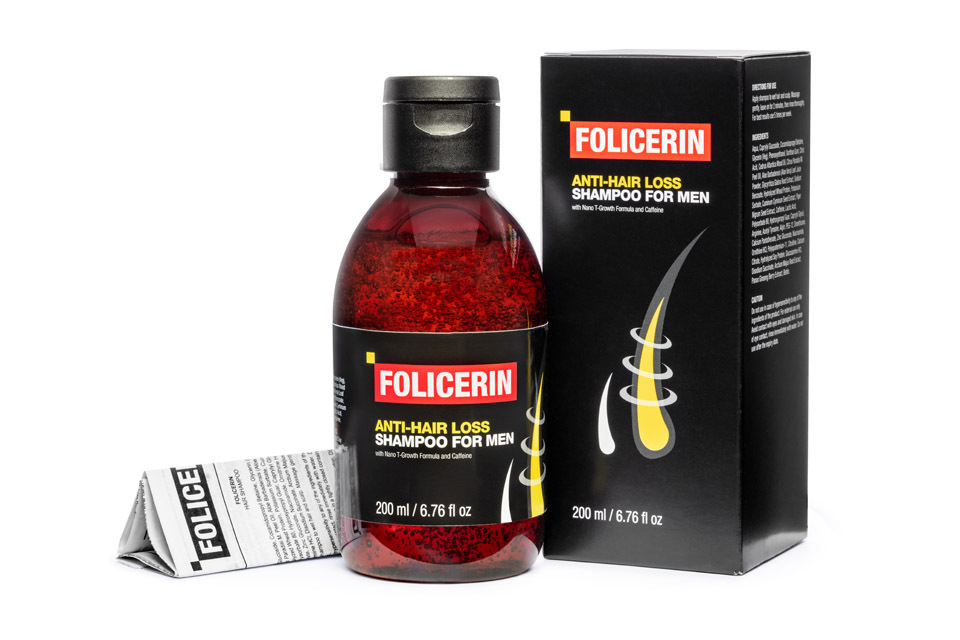A receding hairline is one of the most common early signs of hair loss—and one of the most frustrating. We understand how alarming it feels to notice your temples creeping back or your forehead appearing larger. The good news is that most people can slow, stop, or significantly improve early hairline recession once they understand what’s actually causing it.
Below, we present a deep, comprehensive, and highly detailed guide explaining the real reasons your hairline is receding and the most effective strategies to halt the process quickly.
Understanding the Science of Hairline Recession
A receding hairline typically begins when the hair follicles around the temples become miniaturized, producing thinner, weaker hairs until they eventually stop growing. This process is known as follicle miniaturization, and in most cases, it is driven by a powerful combination of genetics, hormones, lifestyle factors, and scalp environment.
To protect your hairline, you must first understand each of these contributing forces.
1. Genetic Sensitivity to DHT: The Root Cause Most People Ignore
The most common cause of a receding hairline is androgenic alopecia, also known as male or female pattern hair loss. The hormone driving this condition is dihydrotestosterone (DHT)—a derivative of testosterone.
Many people believe DHT levels themselves are the issue. In reality, the true problem is follicle sensitivity. Your genetics determine how strongly your follicles react to DHT.
When follicles are sensitive to DHT, several things happen:
-
They shrink over time
-
They produce thinner, shorter strands
-
They eventually stop growing entirely
Once this cycle begins, it accelerates unless interrupted with proper intervention.
2. Chronic Stress and Cortisol’s Impact on Hair Health
Stress doesn’t just affect your mood—it profoundly impacts your hair. When cortisol levels rise:
-
Blood flow to the scalp decreases
-
Nutrient delivery to hair follicles drops
-
The growth cycle shortens
-
More hairs enter the shedding phase prematurely
For those already genetically vulnerable, stress acts like fuel on the fire, speeding up hairline recession dramatically.
3. Poor Scalp Circulation and Inflammation
A healthy scalp is essential for a healthy hairline. Two issues almost always worsen recession:
Low Circulation
When oxygen and nutrients fail to reach the follicles effectively, hair growth becomes weak and irregular.
Inflammation
Scalp inflammation often leads to:
-
Redness
-
Itchiness
-
Flakiness
-
Weakening of follicles
Chronic inflammation can significantly accelerate recession—especially near the temples.
4. Nutrient Deficiencies That Thin the Hairline Fast
Even if your genetics are working against you, your diet determines how well your follicles function. Several nutrient deficiencies are strongly associated with early hair thinning:
-
Iron
-
Vitamin D
-
Biotin
-
Zinc
-
Omega-3 fatty acids
-
Protein
A deficiency in any of these can slow growth and increase shedding, making your hairline appear to recede even faster.
5. Aggressive Hairstyles and Mechanical Damage
Tension-based hairstyles—especially tight ponytails, braids, dreadlocks, weaves, and repeated hat compression—can trigger traction alopecia, one of the most common preventable causes of a receding hairline.
The constant pulling weakens the follicles and eventually causes permanent damage if not corrected early.
6. Lifestyle and Environmental Factors You May Not Realize Affect Your Hairline
Several overlooked factors can rapidly accelerate hairline recession:
-
Smoking, which reduces scalp blood flow
-
Poor sleep, which disrupts hormonal balance
-
Excessive heat styling, which weakens hair fibers
-
Exposure to pollutants, which increases follicle inflammation
-
Harsh shampoos with sulfates, which strip natural oils
Small lifestyle adjustments often create surprisingly large improvements in hairline health.
How to Stop Your Hairline from Receding—Fast
Stopping a receding hairline requires a strategic, multi-layered approach focused on scalp health, hormonal balance, follicle stimulation, and consistent long-term care.
Below are the most effective, evidence-supported methods.
1. Reduce DHT’s Impact on the Hairline
Because DHT sensitivity is the primary driver of hairline recession, reducing the hormone’s effect on follicles is crucial.
Topical Solutions
-
Topical finasteride
-
Topical saw palmetto
-
Caffeine-based serums
These work by decreasing DHT’s binding to hair follicles, slowing miniaturization.
Natural DHT Blockers
While not as strong as medical treatments, several natural ingredients support hormonal balance:
-
Pumpkin seed oil
-
Green tea extract
-
Rosemary oil
-
Pygeum
These can be helpful additions for mild to moderate recession.
2. Stimulate Follicles With Proven Growth Activators
Minoxidil
Minoxidil increases blood flow and prolongs the hair growth phase. Consistent use can:
-
Strengthen existing hairs
-
Thicken miniaturized follicles
-
Improve density along the temples
Red Light Therapy (LLLT)
Low-level laser therapy enhances:
-
Circulation
-
Cell energy production
-
Follicle growth activity
LLLT caps and devices show significant improvements for many users with early recession.
Microneedling
Microneedling creates micro-injuries that:
-
Boost collagen
-
Increase blood flow
-
Improve absorption of topical treatments
When combined with minoxidil, the results can be dramatically faster.
3. Strengthen the Scalp Barrier and Reduce Inflammation
Healthy follicles grow in a healthy scalp. To create the ideal environment, prioritize:
-
Gentle, sulfate-free shampoos
-
Anti-inflammatory ingredients like rosemary, tea tree, and ketoconazole
-
Scalp exfoliation to remove buildup
-
Regular scalp massage to improve circulation
These steps help reduce shedding, increase thickness, and slow recession.
4. Optimize Nutrition for Maximum Hair Growth
Your hairline responds quickly to nutrient improvements. To nourish your follicles, ensure adequate intake of:
-
Protein (foundation of hair structure)
-
Vitamin D (essential for follicle cycling)
-
Iron (critical for oxygen delivery)
-
Omega-3s (reduce inflammation)
-
Zinc & biotin (support keratin production)
A nutrient-dense diet can noticeably improve hair quality within weeks.
5. Adopt Healthy Hair Habits That Protect the Hairline
Simple changes can dramatically reduce further recession:
-
Avoid tight hairstyles or hats that apply pressure
-
Reduce heat styling and harsh chemical treatments
-
Switch to silk pillowcases to minimize friction
-
Allow hair to air dry when possible
-
Use strengthening conditioners and masks
These small habits collectively protect your hairline from unnecessary stress.
6. Manage Stress to Restore Hair Growth Balance
Stress management is essential for hairline recovery. Effective methods include:
-
Deep breathing exercises
-
Walks and light exercise
-
Sleep optimization
-
Meditation
-
Journaling
-
Limiting caffeine and alcohol
When cortisol is reduced, the hair growth cycle stabilizes, and shedding slows dramatically.
The Bottom Line: A Receding Hairline Is Reversible for Most People
While a receding hairline can feel discouraging, the truth is that most people can slow, reverse, or significantly improve recession with the right approach. The key is understanding the real cause—usually a combination of DHT sensitivity, inflammation, stress, and poor scalp health—and addressing each factor systematically.







